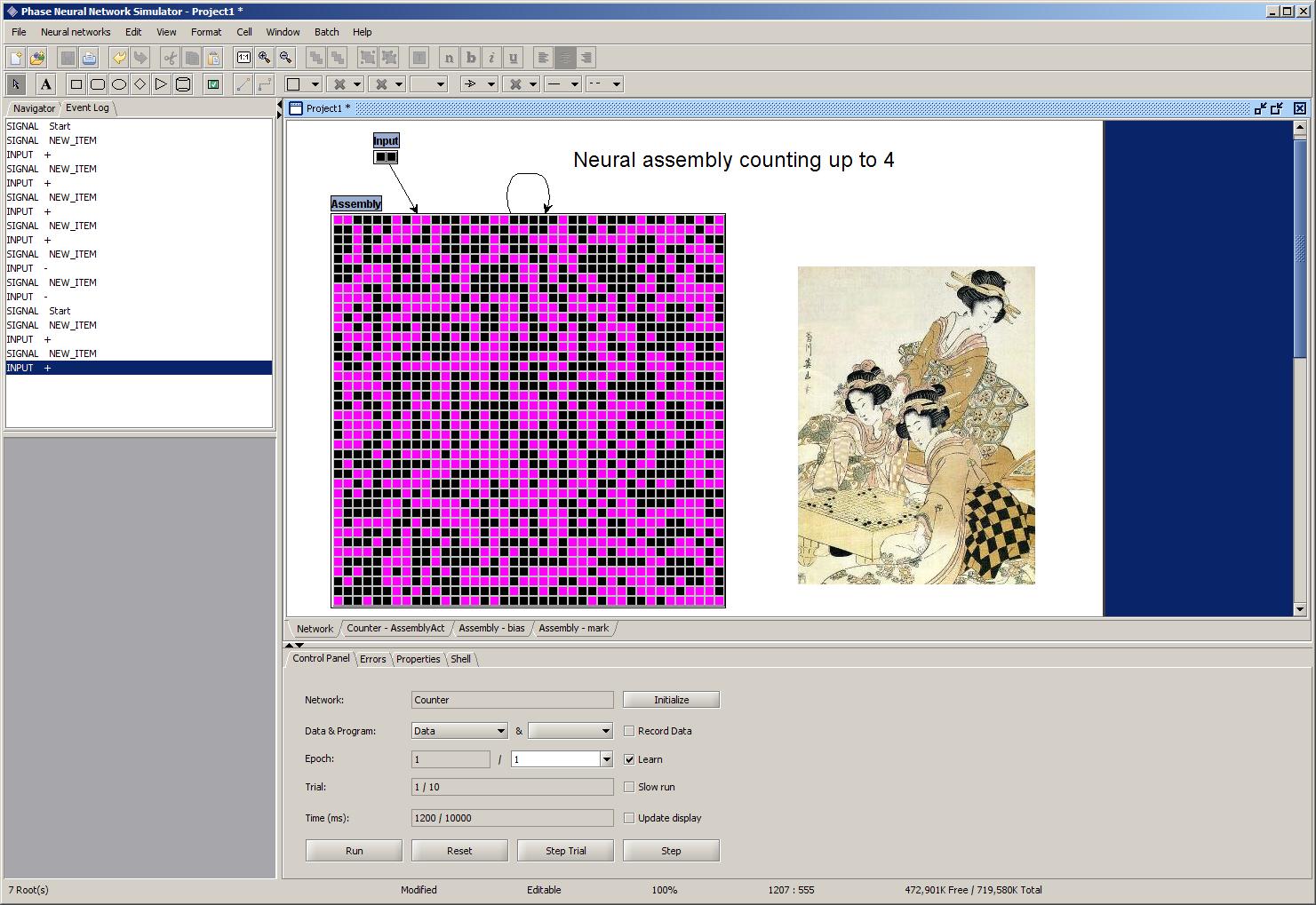
Please click here to go to the project page at Source Forge, or email the author for more information about the neural network model or the simulator.
This home page is a stub and will be updated when the simulator is released in Mar 2009. Thanks for visiting.
Screenshots
Downloads
Basic Java binary file download [5.9M] (08/25/2008)
Java binary package with network diagrams download [6.5M] (08/25/2008)
Source code at Source Forge (SVN access): svn co https://pnn.svn.sourceforge.net/svnroot/pnn pnn
Source forge project link
Installation
For the Basic version pnn.jar, one can simply execute the runnable jar file by "java -jar pnn.jar". The package will first need to be extracted into a directory, which contains the jar file that can be run as above.
GUI
From the GUI, one can create a new project, and load a predefined network. The Control Panel (bottom panel) can be used to control the simulation. "Run" will run the simulation for a defined number of epochs. "Step" runs the simulation a single step. "Reset" clears network activity and restarts the dataset. "Init" will randomize the weights. For each network, there is a selection of Data and Programs. Data are input patterns presented to the network. Programs are Signal-Action pairs which control the overall behavior of the network -- it can be seen as the Central Executive function in Baddeley's working memory model. Raw network outputs are displayed in a tab on the main pane (when the option Record Data is ON).
Neural networks
The only learning algorithm implemented is Hebbian learning. For Hebbian learning, there is no difference between input and output. Activation patterns are presented to the network as defined in the Dataset(s). Each network can have multiple datasets, used for training and testing. Learning should be turned on for "training" sets, and turned off for "testing" sets. Some networks also have "Programs", which are predefined sets of Signal-Action pairs. They provide a simple way of modeling the control function of the Central Executive. Some complicated networks have multiple programs, which are used to control responses to different stimuli (e.g., visual vs. auditory).
If instruction is not given, the following protocol can be used to run the networks. If the network contains a "Training" set and (optionally) a "Training" program, it should be trained for a least 1 epoch before testing.
PNN Team
08/26/2008